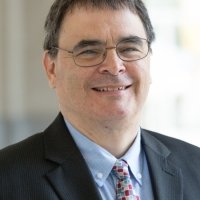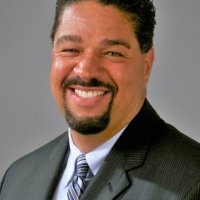Environmental Dimensions of Sustainable Recovery: Learning From Post-Conflict & Disaster Response
“Environmental specialists need to change,” said Anita van Breda at the Wilson Center on June 25. “In the new normal, our work has to have a different relevancy.”
Events like Typhoon Haiyan, Hurricane Sandy, and the civil wars in Darfur and Syria have shown that the environment plays an increasingly critical role in humanitarian disasters. “We are finding that as the world changes, we are facing disaster relief in a different context,” said van Breda, director of the World Wildlife Fund’s disaster reduction and response efforts.
“There is this idea that environmental issues are about restoring ecosystems,” said Alice Thomas, manager of the climate displacement program at Refugees International. “But it’s really about restoring the natural resources that people rely on.”
Environmental experts are more necessary than ever to help people recover and survive disruptions, but are rarely recognized, said a panel of experts last month. In order to confront these new challenges, humanitarian professionals need to work more across sectors and broaden their worldviews.
Disaster Response Lagging Behind
Today, there is a general “lack of coordination between humanitarian and development actors,” said Thomas. Recovery workers tend to only see what directly concerns their specialty, rather than understanding that the resilience of a system depends on its many component parts, she said.
There has been growing recognition of the cross-sectoral challenges posed by complex crises, which can involve political, demographic, conflict, health, and environmental dynamics, but implementation is still difficult.
“Everyone thinks coordination is a good idea, but nobody wants to be coordinated,” said Annica Waleij, a senior analyst and project manager with the Swedish Defense Research Agency, which has supported UN humanitarian missions through consultation and research.
Environmental experts, for their part, are frequently recognized on paper but seldom considered as a normal part of disaster response. Speaking on behalf of American University’s Ken Conca, her partner in a project focused on the environmental dimensions of sustainable recovery, van Breda said precious few disaster response organizations integrate environmental management, humanitarian action, and peacebuilding. This recognition persuaded them to bring together people from all three fields in a series of workshops called the Sustainable Recovery Project to identify common goals and pool knowledge. The project is developing a database of resources, a white paper, and a full report featuring case studies.
“The Tools Are Already There”
Planning and discourse are good, but there comes a point where ideas need to be implemented, not created, said Waleij. “The challenges are very similar between the communities, just expressed a little bit differently.”
A modeling tool in development at the Swedish Defense Research Agency, for example, provides a “Sim City-like” view of refugee camps, allowing users to analyze the footprint of camps and plan layouts. Thomas talked about the UN Refugee Agency’s Safe Access to Food and Energy (SAFE) program, which provides a process for meeting the energy and food needs of displaced persons. And Wendy Cue, chief of environmental emergencies at the UN Office for the Coordination of Humanitarian Affairs (OCHA), referred to the joint UN Environment Program-OCHA Environmental Emergencies Center, a database of resources for integrating environmental issues into humanitarian response.
The challenge now is finding ways to get them in front of responders and used. “There is a chronic lack of funding for the environment in humanitarian action, despite good humanitarian donorship,” said Cue.
For example, despite the environmental dynamics in South Sudan – conflict and water scarcity have put millions at risk of starvation – when the United Nations began its eco-housing project, it enlisted the help of only one environmental engineer, said Waleij. “The only environmental engineer in the whole mission is also responsible for providing all the water and energy resources to the UN mission.”
Van Breda and Conca’s Crisis Database Resource Tool promises to help organizations learn from each other by serving as a portal through which techniques can be shared. Illustrating how cross-sector cooperation works in practice can create building blocks for increased understanding and efficiency in emergency response, said van Breda.
More Than Hugging Trees and Fuzzy Bunnies
At the end of the day, it’s on those concerned with environmental security and the role of environmental dynamics in disaster and crises response to make their case for relevancy, said Waleij. “What one needs to do is prove that it works.”
Van Breda called for a more “rigorous assessment program” of environmental integration. “Is it really just about hugging trees and fuzzy bunnies or is it actually linked to life and lifesaving activities?” she challenged the community.
Recent examples of cross-sectoral cooperation are creating positive momentum, said Cue. In the wake of Typhoon Haiyan in the Philippines, the island of Estancia was the site of an oil spill after a barge ran aground. Over 600,000 liters of oil leaked into the ocean, contaminating coastlines and mangroves. But work done by a UNEP oil spill expert coordinated through an OCHA environmental field adviser from Sweden led to a recovery effort that not only rid the island of oil, but improved resilience to future disasters, Cue said.
Working with donors to change how response efforts are funded is also important. Money often dries up soon after the initial disaster, leaving many without the means to create a sustainable recovery, said Thomas. “Donors would rather provide life-saving assistance than support long-term recovery.” Moving forward, funding will need to be sustained longer if governments and NGOs hope to move from picking up the pieces to building resilience for the next crisis.
“The response is going to need to get outside the camp setting,” said Thomas. The goal should be larger than temporary relief. This is what environmental experts can bring: a way to see the larger picture and envision a better future.
“The world is not going to be ordinary, neat, and tidy as we go forward,” said van Breda. “This is a life-long exercise, adaptation is continual, so we might as well learn, and learn together.”
Event Resources:
Written by Thomas Curran, a cadet at the United States Military Academy at West Point and an intern with the Wilson Center’s Environmental Change and Security Program; edited by Schuyler Null and Lauren Herzer.
Sources: Famine Early Warning Systems Network, Joint UNEP/OCHA Environment Unit.
Speakers


Vice President, Sustainable Markets, Pact
Hosted By

Environmental Change and Security Program
The Environmental Change and Security Program (ECSP) explores the connections between environmental change, health, and population dynamics and their links to conflict, human insecurity, and foreign policy. Read more
